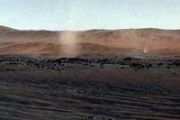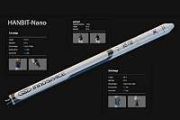
Copernical Team
Enchanting Encanto Calls: Sols 3732-3734
 Today we made a three-sol plan for the weekend including contact science, lot of imaging, and a long drive back toward the previously attempted marker band drill target, Encanto. After additional exploration of the marker band, the team decided it was worth turning around and trying to drill again in the same general location as Encanto.
I took on a new role as Engineering Uplink Lead (EUL
Today we made a three-sol plan for the weekend including contact science, lot of imaging, and a long drive back toward the previously attempted marker band drill target, Encanto. After additional exploration of the marker band, the team decided it was worth turning around and trying to drill again in the same general location as Encanto.
I took on a new role as Engineering Uplink Lead (EUL NASA's Aerospace Safety Advisory Panel releases 2022 Annual Report
 The Aerospace Safety Advisory Panel (ASAP), an advisory committee that reports to NASA and Congress, issued its 2022 annual report Tuesday, Feb. 7, 2023, examining the agency's safety performance, accomplishments, and challenges over the past year.
The report highlights 2022 activities and observations on NASA's:
+ Strategic Vision and Guiding Principles br>
+ Agency Governance br>
The Aerospace Safety Advisory Panel (ASAP), an advisory committee that reports to NASA and Congress, issued its 2022 annual report Tuesday, Feb. 7, 2023, examining the agency's safety performance, accomplishments, and challenges over the past year.
The report highlights 2022 activities and observations on NASA's:
+ Strategic Vision and Guiding Principles br>
+ Agency Governance br> Momentus to fly FOSSA systems PocketPod
 Momentus Inc. (NASDAQ: MNTS) has entered into an agreement to fly a PocketPod for FOSSA Systems ("FOSSA"), a Spanish company that offers global low-power Internet of Things (IoT) connectivity and in-space services through its satellite constellation, on a Vigoride mission targeted to launch in October 2023.
Under the agreement with Momentus, FOSSA will be launching a picosatellite deployer
Momentus Inc. (NASDAQ: MNTS) has entered into an agreement to fly a PocketPod for FOSSA Systems ("FOSSA"), a Spanish company that offers global low-power Internet of Things (IoT) connectivity and in-space services through its satellite constellation, on a Vigoride mission targeted to launch in October 2023.
Under the agreement with Momentus, FOSSA will be launching a picosatellite deployer Solving a machine-learning mystery
 Large language models like OpenAI's GPT-3 are massive neural networks that can generate human-like text, from poetry to programming code. Trained using troves of internet data, these machine-learning models take a small bit of input text and then predict the text that is likely to come next.
But that's not all these models can do. Researchers are exploring a curious phenomenon known as in-
Large language models like OpenAI's GPT-3 are massive neural networks that can generate human-like text, from poetry to programming code. Trained using troves of internet data, these machine-learning models take a small bit of input text and then predict the text that is likely to come next.
But that's not all these models can do. Researchers are exploring a curious phenomenon known as in- Momentus Vigoride-5 Status Update #2
 Momentus Inc. (NASDAQ: MNTS), a U.S. commercial space company reports that its Vigoride-5 Orbital Service Vehicle launched on the SpaceX Transporter-6 mission on January 3 continues to be in good health and that the team is continuing to fully commission the vehicle in preparation for further on-orbit operations.
Recent activities have focused on tuning the performance of the attitude dete
Momentus Inc. (NASDAQ: MNTS), a U.S. commercial space company reports that its Vigoride-5 Orbital Service Vehicle launched on the SpaceX Transporter-6 mission on January 3 continues to be in good health and that the team is continuing to fully commission the vehicle in preparation for further on-orbit operations.
Recent activities have focused on tuning the performance of the attitude dete AI supercharges battle of web search titans
 A new generation of AI chatbots has unleashed a titanic battle between Microsoft and Google for the eyeballs of billions of web users, and the dollars they bring.
Microsoft has gone all-in with a multibillion-dollar investment in OpenAI, the firm behind the world's most buzzy bot ChatGPT, hoping to revolutionise its unloved Bing search engine.
Google has owned the search market for two d
A new generation of AI chatbots has unleashed a titanic battle between Microsoft and Google for the eyeballs of billions of web users, and the dollars they bring.
Microsoft has gone all-in with a multibillion-dollar investment in OpenAI, the firm behind the world's most buzzy bot ChatGPT, hoping to revolutionise its unloved Bing search engine.
Google has owned the search market for two d GEODNET offers centimeter precision and GNSS corrections for OEMS and Ag Sector
 At the FIRA international agricultural robotics forum, GEODNET announces initial availability of a Real-Time Kinematic (RTK), Centimeter Precision, GNSS Corrections Service for Original Equipment Manufacturers (OEMs) and Systems Integrators.
GEODNET is compatible with thousands of fielded GNSS receivers from all major brands, on-vehicle automated steering and spraying kits, as well as the
At the FIRA international agricultural robotics forum, GEODNET announces initial availability of a Real-Time Kinematic (RTK), Centimeter Precision, GNSS Corrections Service for Original Equipment Manufacturers (OEMs) and Systems Integrators.
GEODNET is compatible with thousands of fielded GNSS receivers from all major brands, on-vehicle automated steering and spraying kits, as well as the Researchers focus AI on finding exoplanets
 New research from the University of Georgia reveals that artificial intelligence can be used to find planets outside of our solar system. The recent study demonstrated that machine learning can be used to find exoplanets, information that could reshape how scientists detect and identify new planets very far from Earth.
"One of the novel things about this is analyzing environments where pla
New research from the University of Georgia reveals that artificial intelligence can be used to find planets outside of our solar system. The recent study demonstrated that machine learning can be used to find exoplanets, information that could reshape how scientists detect and identify new planets very far from Earth.
"One of the novel things about this is analyzing environments where pla SwRI models explain canyons on Pluto moon
 In 2015, when NASA's New Horizons spacecraft encountered the Pluto-Charon system, the Southwest Research Institute-led science team discovered interesting, geologically active objects instead of the inert icy orbs previously envisioned. An SwRI scientist has revisited the data to explore the source of cryovolcanic flows and an obvious belt of fractures on Pluto's large moon Charon. These new mod
In 2015, when NASA's New Horizons spacecraft encountered the Pluto-Charon system, the Southwest Research Institute-led science team discovered interesting, geologically active objects instead of the inert icy orbs previously envisioned. An SwRI scientist has revisited the data to explore the source of cryovolcanic flows and an obvious belt of fractures on Pluto's large moon Charon. These new mod Fundamentals of Space Missions
 The newly released book "Fundamentals of Space Missions: Problems with Solutions" (ISBN 9798985668742) provides a comprehensive guide for students, instructors, and professionals alike in the field of space systems and missions.
Written by Professor Mike Gruntman, a renowned astronautics expert who has taught the subject at the University of Southern California for the past 25 years to ove
The newly released book "Fundamentals of Space Missions: Problems with Solutions" (ISBN 9798985668742) provides a comprehensive guide for students, instructors, and professionals alike in the field of space systems and missions.
Written by Professor Mike Gruntman, a renowned astronautics expert who has taught the subject at the University of Southern California for the past 25 years to ove 



























